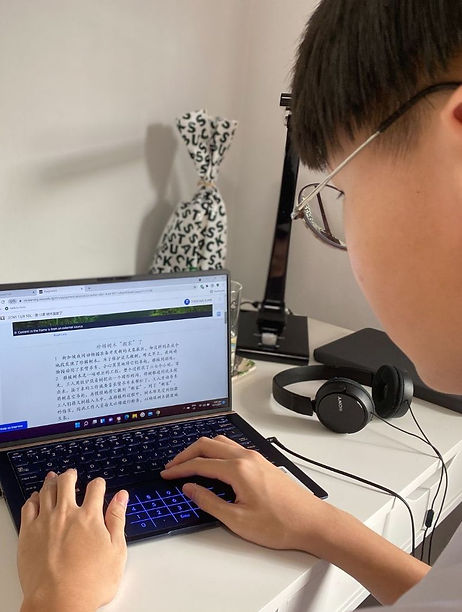3 min read
Speak Mandarin? Apparently, we can’t
The continued efforts of engaging students with Chinese through the digital realm.
BY: ALAN KHO WEI ZE
Getting youths interested in learning Chinese has always been a challenge, but social media and digital tools may help aid many Chinese teachers.
Ms Bertha Kwok, a Chinese language teacher currently teaching in Deyi Secondary School, says, “Everyone treats English as more important even in educational policies. No doubt English is still the main [language] so I guess in Singapore, it’s very practical.”
According to the Singapore Department of Statistics, Mandarin, as a “language most frequently spoken at home among resident population aged 5 and over”, has decreased from 35.6 per cent in 2010 to 29.9 per cent in 2020.
To combat this decline, a pair of twins known as the Chinese Hackers on TikTok have been using the platform to interest the youth.
Austin and Ashley Soon, both 25, say, “[The attention of Singaporean youths] is on social media. So engage them where their attention is.”
The twins use TikTok as a means to create entertaining content combined with educational elements, calling it Edutainment.

Austin Soon asked a student in public the meaning of some Chinese words for Tiktok. PHOTO: COURTESY OF CHINESE_HACKERS
“Look at Hallyu (Korean wave), through entertainment they have increased the interest in Korean culture and language on a global scale,” says the twins.
However, they aren’t fighting this battle alone. In recent years, there’s been more users on social media creating edutainment content. One example is the YouTube channel “Sugar Melon”, who creates entertaining videos by having their talents play different party games by speaking only Chinese.
The efforts to capitalise on social media and digital platforms aren’t only used by content creators, but teachers as well.
Ms Bertha Kwok says, “We are also harnessing a lot of E-pedagogy. I think a lot of interactive platforms or ICT tools that we [are using] continue [to engage] our students. So hopefully, with that, the learning motivation is there.”
The Ministry of Education (MOE) has recently put out an article showcasing the efforts of different schools to enhance the learning of the Chinese Language through digital platforms. Teachers are using more digital tools such as Nearpod and Kahoot to make learning more engaging.
Nearpod allows the teachers to have more interactive presentations while teaching. Kahoot gives the students a fun and competitive way to test their understanding of a new topic.
Took Kai Xuan, 14, a Secondary 2 student, said that the shift to using more digital platforms to learn Chinese is “more effective as compared to traditional ways of teaching”.

Kai Xuan using the Student Learning Site (SLS) to access Chinese learning materials. PHOTO: COURTESY OF TOOK KAI XUAN
“I feel more compelled to learn Chinese as I get to use tools that are more familiar to me rather than just looking at a boring textbook. Being able to use online portals and playing games to learn Chinese is way more fun,” says Kai Xuan.
Fellow TikToker Glacier Sim also says, “I think platforms like TikTok and Douyin are effective especially in getting the attention from viewers and we can learn through these videos.”
While the effectiveness of these online platforms are yet to be proven, they are here to stay.
“[We] believe entertainment is the way to motivate students to learn Chinese. We need to expose them to the fun side of learning Chinese,” says the twins.
